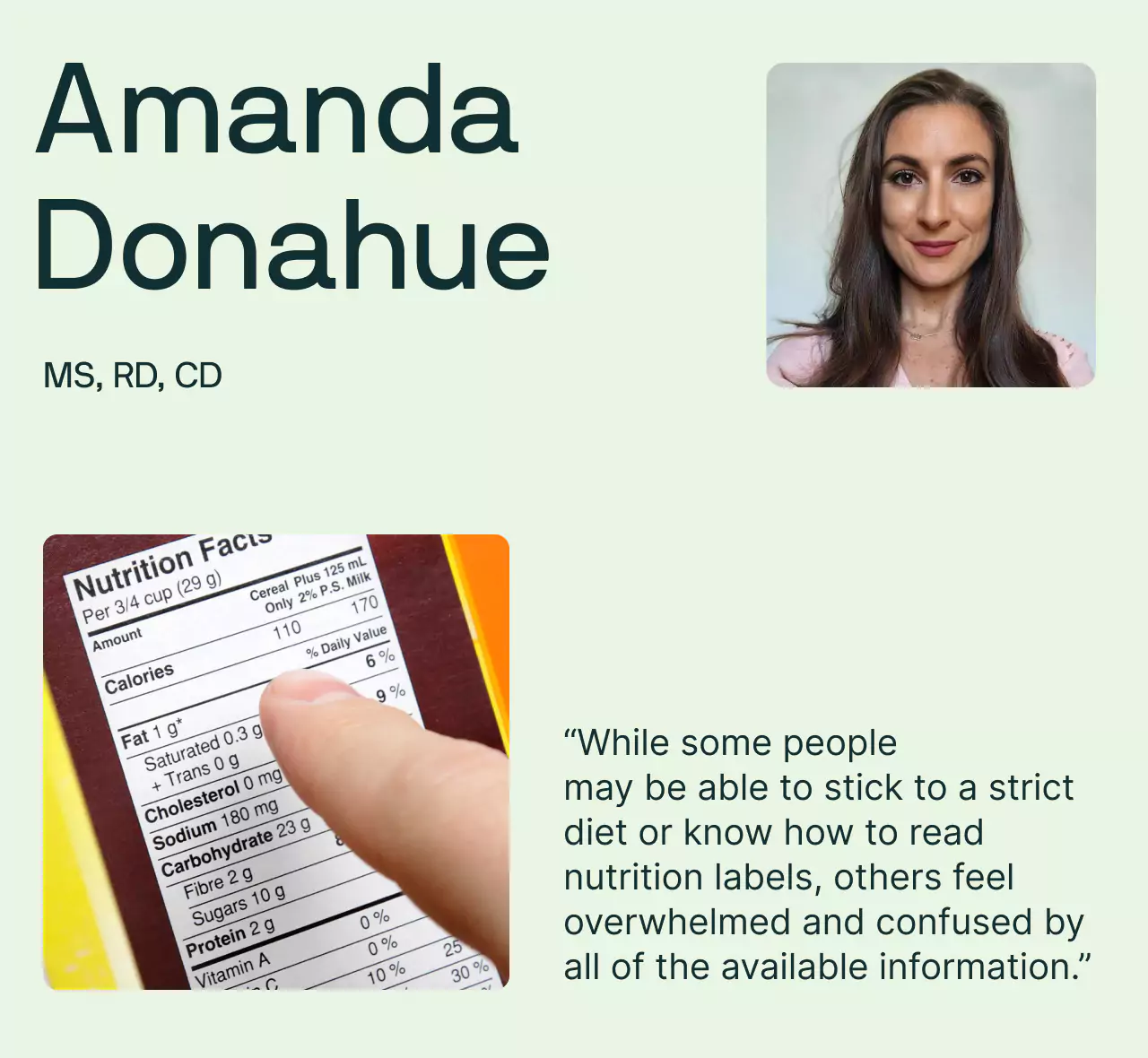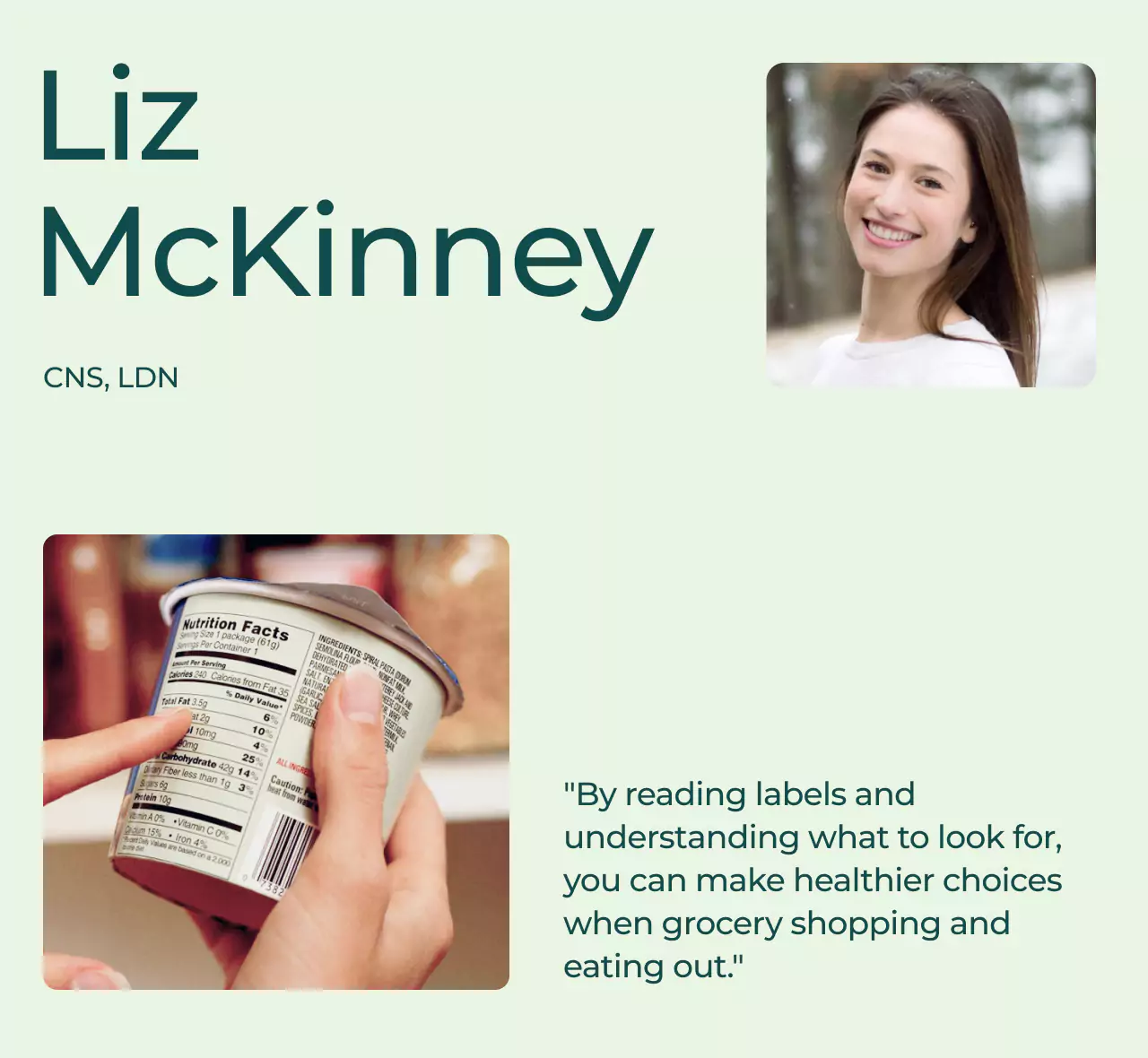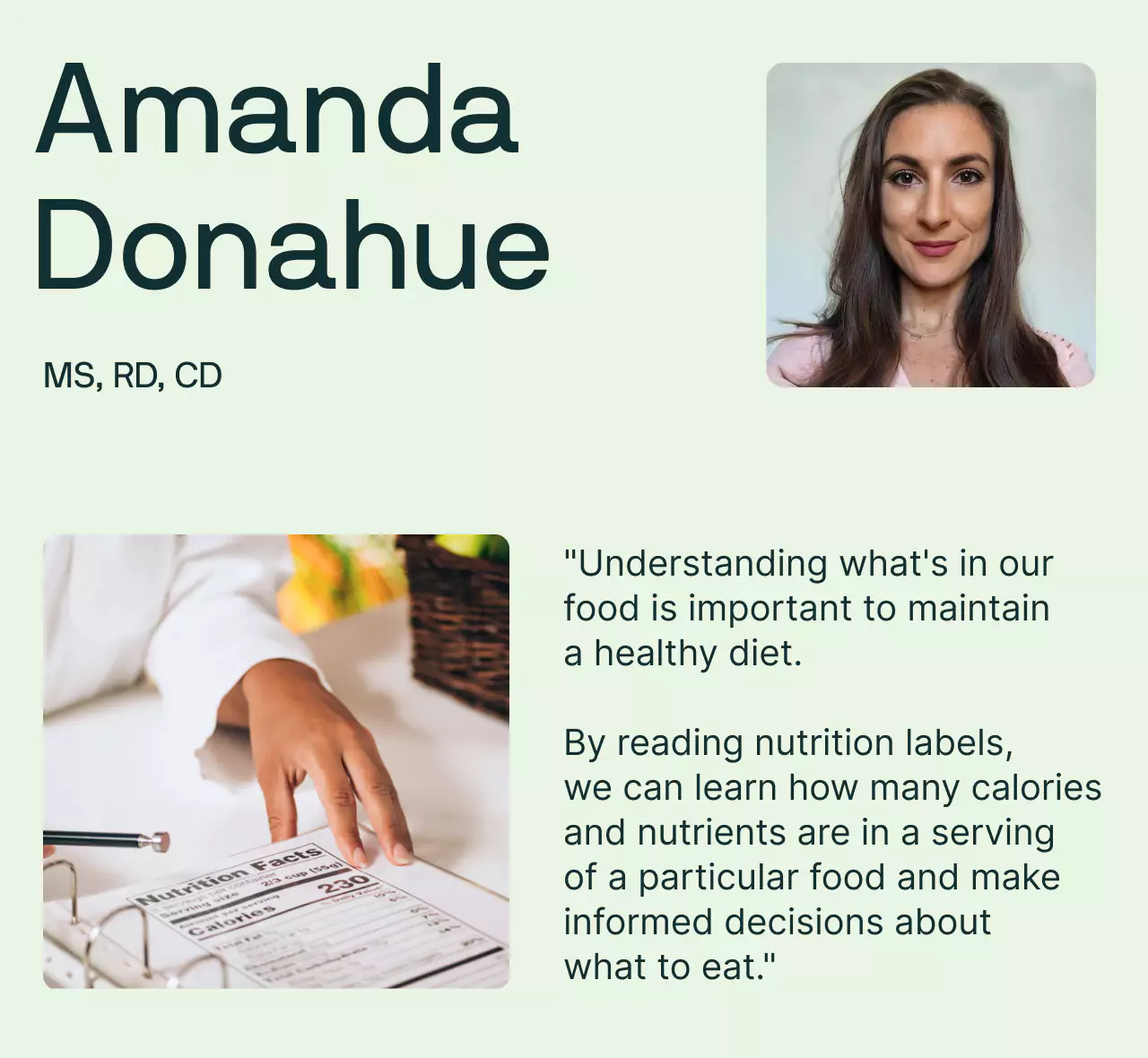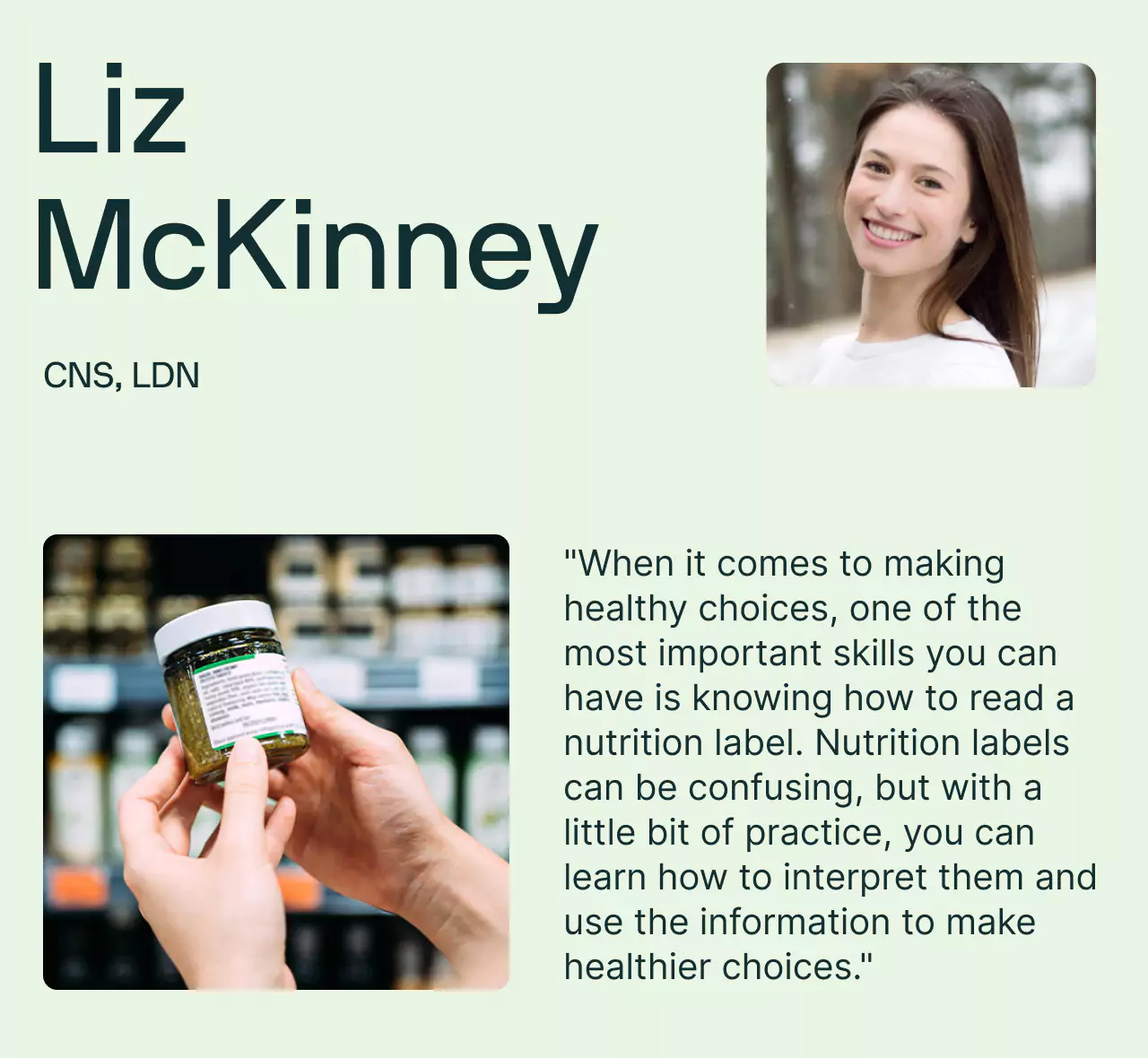
Key Takeways
When you’re making healthy choices, one of the most important things you can do is pick healthier foods. And this doesn’t mean picking up all the low-calorie, weight loss-friendly foods at the grocery store. After all, do you know how many grams of sugar may be hiding in a low-fat food? Or how much a single serving of your favorite meal is eating into the recommended daily value of carbs?
It may seem like a mystery, but there’s a way to make healthier choices without hassle—read the nutrition facts label!
Why Reading Nutrition Fact Labels Matters
Nutrition facts labels aren’t just there for calorie counters or people who want in-depth nutrition information about everything they eat. For most of us, they’re simply the best way to reveal what’s really in your food. From hidden sugars to sodium bombs and questionable additives, there’s a lot more than total carbohydrates and total fat to look for on your food, especially packaged foods!
When you understand the basics, you’re better equipped to make choices that support weight management, better energy, glucose balance, and improved overall health.
What Exactly is a Nutrition Facts Label?
When you're looking to buy a specific food product, the nutrition facts label can help you make informed choices about the foods you eat. Knowing what’s in every ingredient in your food can help you avoid unhealthy unsaturated fats, limit refined carbohydrates and make the right choices for your needs.
The Food and Drug Administration (FDA) regulates food labeling to protect consumers from inaccurate or deceptive information. All food labels must comply with FDA regulations, which means they must provide accurate information about the nutritional content of the food. It includes both mandatory and voluntary labeling. But there’s a lot of information on food labels these days, and it can be hard to know what to make of it all.
You don’t have to know everything about every ingredient, but it can help to know what to look for. Don't worry—we're here to help! We asked two of the board-credentialed nutritionists from the dietitian coaching team here at Nutrisense put some tips together on what to look for on nutrition labels to make the best choices for your health.
Nutrisense Nutritionist Tips to Reading Food Labels

Total calories, dietary fiber, sucrose, dextrose, total fat... even if you’re used to counting calories, reading nutrition labels can be a chore.
No matter how well versed you are with everything from perfect daily values to serving sizes, understanding every detail on every label can be challenging. But you don’t always need to know it all to make healthy choices. Here’s a cheat sheet for how to choose your food the next time you’re at the grocery store:
Focus on Whole Foods

Amanda’s tips for choosing foods based on the nutrition facts label
- According to Amanda, it’s essential to look at the ingredients list to ensure that you don’t see mainly additives and substitutes. Look for foods that list primarily whole food sources on their ingredient lists.
- Sugar content is extremely important. When looking at nutrition labels, make sure there are no added sugars. Depending on the food product, Amanda ideally prefers to see a range of 0.0 to 0.5 grams of sugar, but it depends on the situation so she doesn't have a specific range that fits every case.
Fewer Ingredients = Healthier Choices

Liz’s tips for choosing foods based on the nutrition facts label
- Liz begins by looking for ingredients that she can easily read and pronounce. Her rule is that if there is a long list of ingredients in a food that you cannot pronounce, you may want to think twice about putting that into your body. While there may be a couple of ingredients that you don’t know in a food, if there are five to 10 you don't understand on the ingredients list, you may want to rethink your purchase.
- She also likes to steer her members away from ingredient lists that are very long. The fewer ingredients found on a nutrition facts label, the closer you are to eating the whole, nutrient-dense foods that make up what's in the product.
- Liz likes to avoid foods with hydrogenated oils. Hydrogenated oil is a type of vegetable oil treated with hydrogen gas. This process makes the oil more shelf-stable and less likely to go rancid. However, it also increases the amount of trans fat in the oil. Trans fat is a type of saturated fat that can raise your cholesterol levels and increase your risk of heart disease. Check the ingredient list for hydrogenated as well as partially hydrogenated oils.
Consider Serving Sizes

Amanda’s tips for choosing foods based on the nutrition facts label
- Amanda likes to begin examining nutrition labels by looking at the serving size. Some serving sizes account for the entire container of food you are holding. In contrast, others only account for a small portion. Nutrition facts label only account for amounts per serving which can get tricky.
- Keep an eye out for any gluten-free products or other common allergies like tree nuts and shellfish that have warnings (usually placed near the nutrition facts label). It may indicate the product is made in a factory that uses these common ingredients (which creates a cross-contamination possibility). It can be detrimental to people who are sensitive to the allergens they're trying to avoid.
Be Wary of Certain Labels

Liz’s tips for choosing foods based on the nutrition facts label
- Liz’s first warning to members is to avoid being fooled by food products labeled organic. Organic does not necessarily mean the food you are looking at is healthy or best suited to your dietary needs! Candy, ice cream, macaroni and cheese, and pizza can be labeled organic too.
- Gluten-free labels can also be deceptive. These foods can still have many added sugars, additives, and preservatives and may not be a great choice for your body or your blood sugar response. When the structural protein (gluten) of the starch is removed, manufacturers have to add other ingredients to make their products taste good, and that added ingredient is typically sugar.
- Fat-free labels are another commonly misleading marketing term that Liz usually warns members about. She sees this often on candy-like Red Vines Licorice. Yes, there is no fat content, but this product is 100 percent added sugar and chemicals and will spike your blood glucose levels if you aren’t cautious about your portion size!
- When selecting canned or frozen foods, Liz always likes to check the sodium content. A quick way to assess if a product is high or low in sodium is to use the five-and-20 percent rule. If the sodium is five percent or less, this is a reasonably low sodium item. If it’s 20 percent% or higher, leave it on the shelf and find an alternative.
Final Takeaway: Read Nutrition Labels to Eat Smarter
The phrase "you are what you eat" is often used to encourage people to make healthier choices and we all know that we should be reading nutrition facts labels, but many don't understand why.
Sure, it’s a good idea to watch your total calorie intake and make sure it suits your dietary needs, but there’s more to it than low-calorie diets. Remember, it’s not just about low-calorie foods for weight management; it’s a roadmap for healthy eating.
Nutrition labels provide valuable information about the food we're eating, including the number of calories, fat, carbohydrates, protein, essential vitamins like vitamin A, vitamin D and minerals like potassium and magnesium it contains. So take a moment to scan those nutrition labels. Small swaps, like picking lower-sugar options or skipping hydrogenated oils, can make a big difference in how you feel day to day.
Find the right Nutrisense programto turn insight into progress.
Go Beyond Glucose Data with Nutrisense
Your glucose can significantly impact how your body feels and functions. That’s why stable levels are an important factor in supporting overall wellbeing. But viewing glucose isn't enough. Nutrisense, you’ll be able to learn how to use your body's data to make informed lifestyle choices that support healthy living.
Sign up for insurance-covered video calls to work with a glucose expert: a personal registered dietitian or certified nutritionist who will help tailor your lifestyle and diet to your goals.
With the Nutrisense CGM Program, you can monitor your glucose with health tech like glucose biosensors and continuous glucose monitor (CGM)s, and analyze the trends over time with the Nutrisense App. This will help you make the most informed choices about the foods you consume and their impact on your health.
Ready to take the first step? Start with our quiz to find the right Nutrisense program to help you take control.

Amanda is a Nutrition Manager and Registered Dietitian, with a Masters in Dietetics from Stephen F. Austin State University. Originally from south GA, she got her undergrad degree from Texas Tech University. She worked at a hospital in Fort Worth, TX, for 4 years as a dietitian, counseling those living with HIV.


.webp)

